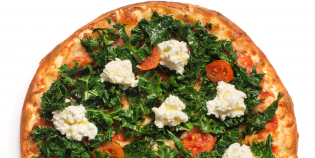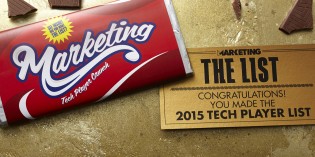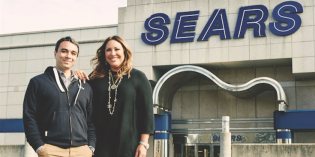Many organizations consider their greatest asset to be their good name and work tirelessly to build a “bank of goodwill” they can borrow from in the case of a PR crisis. Toyota and Maple Leaf Foods, for instance, had already built a foundation of trust when massive product recalls hit. These companies worked diligently over the past year, addressing their issues head-on to regain consumer confi dence. As a result, both made considerable gains in the 2011 Marketing/Leger Corporate Reputation survey. For the third year in a row, Google captured the No. 1 spot, not to mention the respect and admiration of Canadian consumers, thanks to a wide range of user-friendly products and apps. Perennial favourites Kellogg, Staples, Kraft, Canadian Tire, Shoppers Drug Mart, Tim Hortons and Panasonic also returned to the Top 10. So did Sony, whose ability to hold on to the spot next year depends on its handling of the massive consumer data breach that hit last month. No one said protecting your rep was easy.Turn the page to see who was up and who was down on this year’s list, and in the hearts of Canadians this past year.
Never has the same company taken the top spot on the Corporate Reputation roster three years in a row. Google can almost do no wrong, says David Scholz, vice-president at Leger Marketing in Toronto, noting that the search engine is more than five points ahead of Sony (second place on the list), with a score of 89.4. One of the keys to Google’s success is putting the user first and ensuring their interaction with the site is as seamless as possible, says Wendy Bairos Rozeluk, of global communications and public affairs at Google Canada.
The company looks for ways to make life easier for its users with improved search methods, maps and applications, she says. One of the tools Google added to its arsenal this year was its version of Facebook’s “Like” button, called +1, a much-needed—and deftly executed—response to its competition.
HOT
To better connect with audiences, Cineplex Entertainment evolved and extended its brand across multiple channels with the launch of an online digital download service and mobile app. The best way to experience a movie is still in-theatre, but when guests want to enjoy the movie again, they can choose from a variety of formats available from Cineplex.com, says Pat Marshall, VP, communications and investor relations, referring to the video-on-demand and download services that launched last November. “Cineplex.com is now not just a destination for showtimes and to find out where a movie is playing,” she says. “There’s all kinds of great custom entertainment content that’s created about all things movies.” Also available on the site, in both English and French, is Cineplex’s free mobile app. Not only can guests catch up on the latest movie news, view trailers and receive promotions, they can also purchase tickets. More than a million of the apps have been downloaded so far. To make life simpler for users, the app displays information for theatres across the country, not just Cineplex locations.
“I think people are delighted with that because you don’t want four or five different apps to provide the same information,” says Marshall. All those moves helped boost profit to $10.9 million from $9.5 million. “We have year-over-year exceeded our goals and business objectives so it’s a company and a brand that people believe in and they know what we say, we do,” says Marshall.
After recalling 8.5 million vehicles worldwide, and approximately 270,000 cars and trucks in Canada starting in late 2009, Toyota worked tirelessly through 2010 to regain consumer confidence, launching print ads in major newspapers, an online video, TV spots and a media tour in February 2010 that outlined the recall’s Canadian implications. Most recently, Toyota embarked on an educational campaign and ramped up its online and social media presence (see page 22 for more). Toyota is the biggest riser on this year’s list with a reputation score of 60.2 after dropping a whopping 86 spots to No. 95 in 2010, with a reputation score of 38.“If you build [reputation] in the right way and you’ve planned for the potential losses, you’re able to bring it back quicker than other companies,” says Scholz.
“That’s why you have a reputation… to build up that capital you can draw on at certain times, and [Toyota has] been drawing on its capital for the past year and slowly bringing its number back up,” he says of the automaker, which up until two years ago was a regular in the Top 10.
As most carriers around the globe reeled from high fuel prices and an uptick in “staycations,” WestJet continued to fly high this year. The Calgary-based airline added five aircrafts to its fleet and recently increased its flight schedule in the crucial “Eastern Triangle” of Toronto, Montreal and Ottawa. On average, WestJet flies approximately 40,000 guests per day across its 71-city network. More than 51,000 people flew on WestJet going into the Easter weekend, which is a new single-day record for the airline. (The previous record of 50,336 passengers was set last Christmas.) “Thus far, we are pleased with the strength of consumer demand and the market’s ability to absorb fare increases as we navigate through a period of elevated fuel costs,” said WestJet president and chief executive Gregg Saretsky, in a release.
And in an attempt to draw more international traffic into its network, WestJet signed a code-share agreement with Hong Kong-based Cathay Pacific, making it easier for travellers from Asia to reach several Canadian destinations. “They’re an organization that’s continuing to find itself and continuing to improve and be better and expand operations,” says Leger’s Scholz. “They’re more available to us than ever… and they’re very highly regarded where they are.” The cornerstone of the WestJet brand is a people-driven service experience at a competitive price, a reputation that probably helped it recover quickly from an online reservation system meltdown in late 2009 and early 2010. The airline has communicated this commitment to people (both customers and employees) since 2005 with its “Owners” advertising platform, developed by ad agency Taxi.
Despite the campaign’s success, WestJet announced it was looking for new agency partners in February, and would consider using multiple, discipline-specific shops.
Even with the number of popular U.S. retailers like Victoria’s Secret opening north of the border, the big story in Canadian retail over the past year was the Bay, Marketing’s “Marketer of the Year” for 2010.Though the retailer is older (much older) than the country, it looked decidedly fresh, playful and cool. Bonnie Brooks, president and chief executive officer of the Bay, is credited with breathing new life into the chain, regaining the credibility lost to niche stores and boutiques. She committed $5 million to re-open The Room—a high-end boutique housed within its flagship Queen St. location in downtown Toronto—that is now double its original size and carries close to 70 luxury lines including some haute couture. Not only did the Bay undergo a fashion facelift, but overhauled its advertising, too. The retailer has been using top photographers to ready its ads for more premium publications. The sophisticated and clean concept lends itself nicely to full-page newspaper pages. Instead of chopping the ad into little boxes to highlight sales and promotions throughout the store, the Bay now focuses on one item at a time.
Maple Leaf Foods spent the last 18 months focusing on the health and convenience of products across many of its brands. It’s one of the ways the company has worked hard to restore the consumer trust it lost following a listeria outbreak in 2008 that was linked to cold cuts produced at the company’s Toronto plant. “Confidence and trust is something you can’t buy—you’ve got to earn it. And the way you earn it is you really make sure you’re creating high-quality products… [and] create innovations that make lives better, or easier,” says Stephen Graham, Maple Leaf’s chief marketing officer. At the time of the outbreak, Maple Leaf Foods was praised for its openness, and quick response. Last year the company suffered a 10-position drop all the way down to 86. This year Maple Leaf Foods jumped 30 spots to No. 56 with a reputation score of 52.6.
“[Maple Leaf Foods] always had, especially among the people buying their products, a great relationship through the whole process [and] that’s why they were able to recover,” says Leger’s Scholz. “But that great relationship also needs to be continued, to show that the trust they’ve earned will continue forward,” he says. Graham says consumers can expect to see more health-conscious product launches and revamps in the coming months. “This is not the end, it’s the beginning,” he says.
NOT
As much as cheap digital-music downloads have devastated retail CD sales, the wider adoption of e-books has forced retailers like Indigo Books & Music Inc. to re-examine their business models. In its 2010 annual report, the Toronto-based company warned that increasing e-book sales could eat into its revenues because digital books are priced lower than the dead-tree variety. According to BookNet Canada, overall book sales in the country were down 5.6% in the fourth quarter of 2010 compared to 2009. With more digital books selling online, Indigo (operating under the Indigo, Chapters and Coles banners) continues to fill up retail space with more toys, teapots and trinkets.
“In recent years Chapters has diversified away from just books, introducing e-books and other kinds of merchandise in their stores, and maybe they’ve dulled their edge as Canada’s premier book seller as a result of that,” says Ed Strapagiel, executive vice-president of Kubas Primedia, a retail consulting firm in Toronto.
While Canadian banks fared well during the economic downturn, the same can’t be said of their reputations in the eyes of Canadians. Four of the five financial institutions (Scotiabank, RBC/Royal Bank, TD Canada Trust, and BMO/Bank of Montreal) dropped down the list this year, while CIBC clung on to No. 99. “Hearing that our banks are doing well [during the recession] made us fell positive about them as organizations,” says Leger’s Scholz. “Now those news stories have gone away and we’re left with our day-to-day banks we need to deal with.”
RBC had the biggest tumble, falling 16 spots to No. 86. Part of this, says Scholz, is the Olympic shine wearing off. RBC, an Olympic sponsor since 1947, was particularly successful during the Vancouver 2010 Winter Games at connecting with consumers on a grassroots level, which is normally quite difficult given the company’s size. Last year RBC gained the largest amount of reputation capital based on its Olympic sponsorship out of all partner corporations, says Scholz.
For years, Sears Canada has been a back-of-the pack retailer, struggling to compete against bigger chains like the Gap and more specialized fashion chains like H&M and Zara. The department store chain, which has been criticized in the past for not putting money into merchandising or keeping the stores up to par, will soon face increased competition from U.S. discount retailer Target. “Sears is a good steady store but they simply don’t have a strong position and much in the way of sex appeal,” says Ed Strapagiel, of Kubas Primedia. “They haven’t been very proactive in terms of promoting the brand over the last year.”
Sears Holdings Corp., which owns more than 90% of Sears Canada, recently reported that last year profit fell 36% to $150 million while sales dropped 4.7 % to $4.9 billion. This has some analysts in the U.S. questioning the future of the 86-year-old chain. Sears Canada didn’t fair much better, with comparable store sales expected to decline 9.2% for the quarter. The Toronto-based retailer will release its unaudited first-quarter earnings at the end of May.
In February, Loblaw predicted 2011 would be one of its most challenging years. Rising food prices, stiff competition and an uncertain economy tend to put a damper on things. But 2010 was a tough year for the Loblaw brand, too. The Canadian grocery giant is still struggling to make sales gains. Loblaw reported a 0.6% decline in revenue for the first fiscal quarter of 2011, while same-store sales fell 0.1%. “The promotional activity in the market is becoming more acute, a bit more aggressive,” company president Allan Leighton told analysts on May 4. Leighton said competitors were in the same situation, “looking for incremental sales.” Rival grocery chains Sobeys and Metro also dropped down the list this year. Meanwhile, “consumer confidence is staid, disposable income is being spent on reducing household debt and fuel costs are biting heavily,” he said. “The balancing act between sales for vanity and profit for sanity is becoming more acute. Consumers are not only shopping less, but spending less.”









